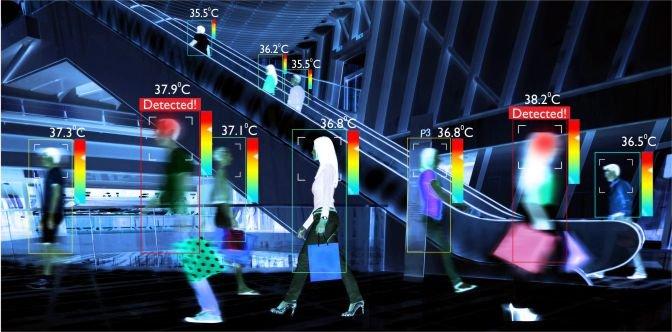Challenges & Requirements
The value of a thermal imaging system is that people can walk through relatively quickly and have any temperature abnormalities be detected. In other words, the system is processing a lot of data in a short span of time. First, the camera needs to detect the face of the person passing through and then assess the temperature based on the radiation emitted as compared to the blackbody (reference source). Meanwhile, the monitor shows what is captured by the camera, so there is no room for glitches or lag in the system. If the monitor cannot display what the camera is capturing in real time, this could potentially cause those watching the monitor to miss a person with an elevated body temperature.
For thermal imaging systems, performance reliability, storage capacity and data integrity are the key requirements to effectively carry out the work of identifying spiked body temperatures. When operating optimally, these systems not only operate faster than handheld thermometers but also eliminate close human contact that poses a risk of infection.
Solutions
Cervoz is prepared to combat this pandemic with you. We recommend our TLC T385 Family of SSDs, which has both the speed and reliability for such a fast-scanning operation and up to 2TB capacity for thermal imaging. T385 family SSDs come with a DRAM buffer that minimizes wear of the drive and improves its overall endurance, and a 3-year warranty—suitable for the monitoring system which needs to work day in and day out.
Of course, speed means nothing without data accuracy and integrity. At Cervoz, we have developed technologies and features that assist our products to work better. End-to-End Data Protection provides comprehensive protection that covers the entire pathway for data transmission from the host computer to the SSD and back. Both End-to-End Data Protection and the Advanced LDPC ECC Engine can detect and correct errors in data transmission, thus maintaining data integrity.
Headquartered in Taiwan, Cervoz Technology Co., Ltd is a supplier of embedded components for the industrial PC market. The company has nearly two decades of experience designing and developing high-performing storage solutions for industry applications.
Cervoz Technology Co. Ltd.
8F., No.10, Aly. 6, Ln. 235, Baociao Rd .Sindian Dist.,
23145 New Taipei City
Telefon: +886-2-2911-9599
http://www.cervoz.com
Marketing
E-Mail: fermin.liu@cervoz.com
![]()

